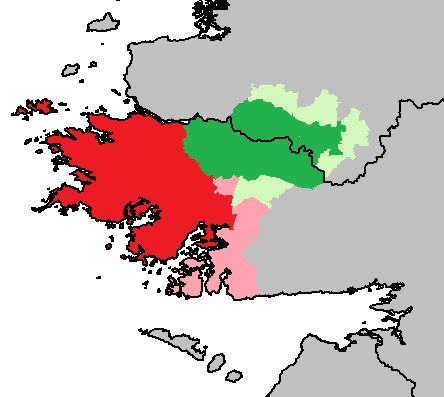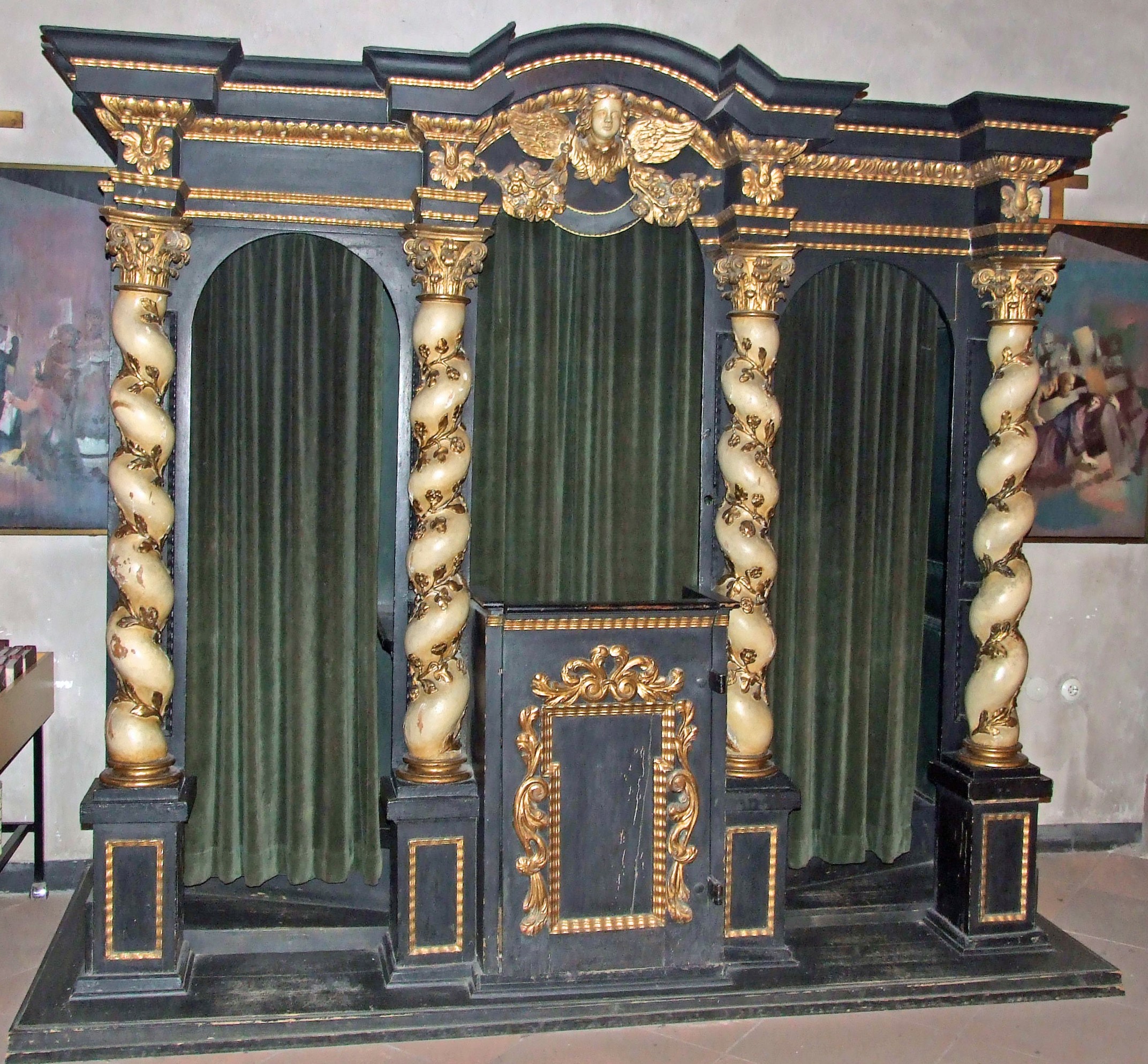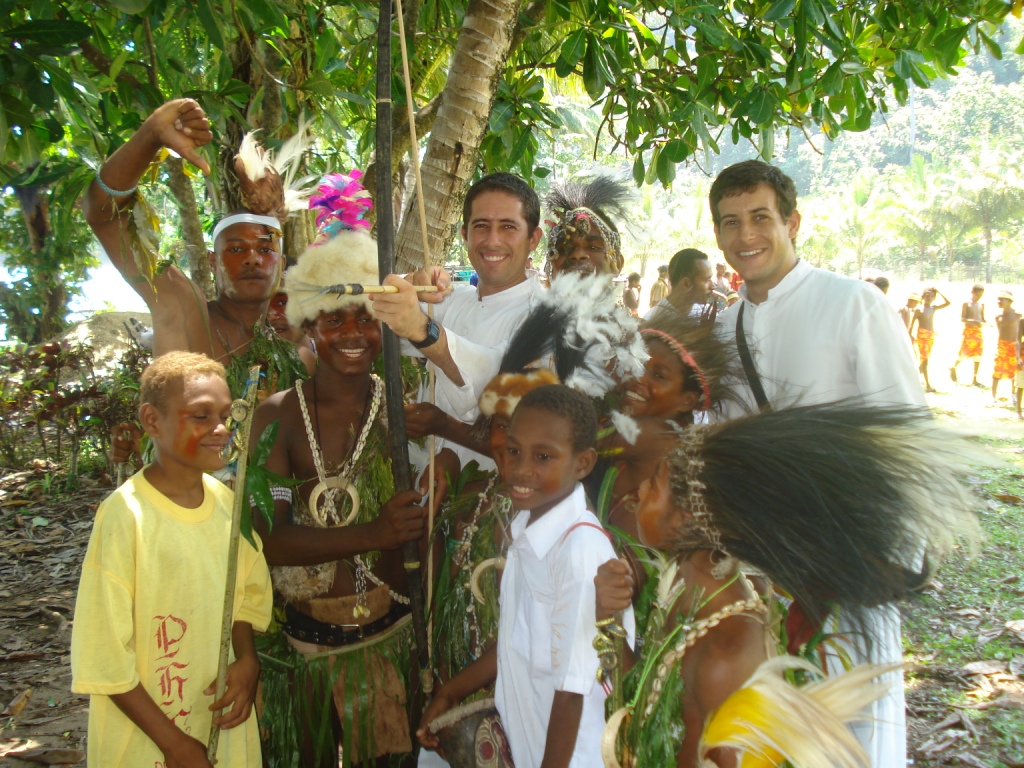|
Gormgal Of Ardoileán
Gormgal of Ardoileán, Connemara, died 1017/1018. Biography Gormgal is credited with building a number of monastic settlements in the late 10th century. Noted as an anchorite of exceptional sanctity, he made Ardoileán (High Island) famous, so much so that in 1014 Brian Boru visited High Island to make his Confession (religion), confession to him. A well on the island is named after Brian. Gormgal's monastery ceased to exist sometime in the following centuries but High Island remained a destination for pilgrims. His feast day is 5 August. See also * Féchín of Fore died 665. * Enda of Aran, died c. 530. * Ceannanach, missionary, fl. c. 490-500? * Gillagori Ua Dubhacan, Abbot of Aran, died 1167. References * ''High Island:An Irish Monastery in the Atlantic'', Jenny White Marshall and Grellan D. Rourke, 2000. * ''A Guide to Connemara's Early Christian Sites'', Anthony Previté, Oughterard, 2008. {{DEFAULTSORT:Gormgal Christian clergy from County Galway 11th-century Irish ... [...More Info...] [...Related Items...] OR: [Wikipedia] [Google] [Baidu] |
Ardoileán
Ardoileán or Ard Oileán, known in English language, English as High Island (a translation of the Irish language, Irish name), is a small island off the northwest coast of Connemara in County Galway, Republic of Ireland, Ireland. It was once the site of an early Irish monastic community. Hermitage It is one of thirty-odd islands off the west coast of Ireland, between Inishtrahull and Clear Island, which were settled by hermits and monastic communities in the early Christian period.Herity, "The hermitage on Ardoileán, Co Galway", p. 65. Other such islands in the direct vicinity of Ardoiléan include Clare Island, Chapel Island, Caher Island, Inishturk, Inishbofin, County Galway, Inishbofin and Inishark. Since (at least) the seventh century, Ardoiléan had been the site of an early monastery or hermitage, reputedly founded by St Féchín of Fore (d. 665). Above the south landing-place, near the remains of the monastery, there is a Christian cross-slab dating perhaps to the seven ... [...More Info...] [...Related Items...] OR: [Wikipedia] [Google] [Baidu] |
Connemara
Connemara ( ; ) is a region on the Atlantic Ocean, Atlantic coast of western County Galway, in the west of Ireland. The area has a strong association with traditional Irish culture and contains much of the Connacht Irish-speaking Gaeltacht, which is a key part of the identity of the region and is the largest Gaeltacht in the country. Historically, Connemara was part of the territory of Iar Connacht (West Connacht). Geographically, it has many mountains (notably the Twelve Pins), peninsulas, coves, islands and small lakes. Connemara National Park is in the northwest. It is mostly rural and its largest settlement is Clifden. Etymology "Connemara" derives from the tribal name , which designated a branch of the , an early tribal grouping that had a number of branches located in different parts of . Since this particular branch of the lived by the sea, they became known as the (sea in Irish is , genitive case, genitive , hence "of the sea"). Definition One common definition o ... [...More Info...] [...Related Items...] OR: [Wikipedia] [Google] [Baidu] |
Anchorite
In Christianity, an anchorite or anchoret (female: anchoress); () is someone who, for religious reasons, withdraws from secular society to be able to lead an intensely prayer-oriented, Asceticism , ascetic, or Eucharist-focused life. Anchorites are frequently considered to be a type of hermit, but unlike hermits, they were required to take a vow of stability of place, opting for permanent enclosure in cells often attached to churches. Also unlike hermits, anchorites were subject to a religious rite of consecration that closely resembled the funeral rite, following which they would be considered dead to the world and a type of living saint. Anchorites had a certain autonomy, as they did not answer to any ecclesiastical authority apart from bishops. The anchoritic life is one of the earliest forms of Christian monasticism. In the Catholic Church, heremitic life is one of the forms of consecrated life. In England in the Middle Ages, medieval England, the earliest recorded anchor ... [...More Info...] [...Related Items...] OR: [Wikipedia] [Google] [Baidu] |
Sanctity
Sacred describes something that is dedicated or set apart for the service or worship of a deity; is considered worthy of spiritual respect or devotion; or inspires awe or reverence among believers. The property is often ascribed to objects (a " sacred artifact" that is venerated and blessed), or places (" sacred ground"). French sociologist Émile Durkheim considered the dichotomy between the sacred and the profane to be the central characteristic of religion: "religion is a unified system of beliefs and practices relative to ''sacred things'', that is to say, things set apart and forbidden." Durkheim, Émile. 1915. '' The Elementary Forms of the Religious Life''. London: George Allen & Unwin. . In Durkheim's theory, the sacred represents the interests of the group, especially unity, which are embodied in sacred group symbols, or using team work to help get out of trouble. The profane, on the other hand, involve mundane individual concerns. Etymology The word ''sacred'' d ... [...More Info...] [...Related Items...] OR: [Wikipedia] [Google] [Baidu] |
Brian Boru
Brian Boru (; modern ; 23 April 1014) was the High King of Ireland from 1002 to 1014. He ended the domination of the High King of Ireland, High Kingship of Ireland by the Uí Néill, and is likely responsible for ending Vikings, Viking invasions of Ireland. Brian Boru is mentioned in the Annals of Inisfallen and in Chronicon Scotorum as "Brian mac Cennétig" (Brian, son of Cennétig). The name ''Brian of Bóruma'' or ''Brian Boru'' was given to him posthumously. Brian built on the achievements of his father, Cennétig mac Lorcain, and especially his elder brother, Mathgamain mac Cennétig, Mathgamain. Brian first made himself king of Munster, then subjugated Kingdom of Leinster, Leinster, eventually becoming High King of Gaelic Ireland, Ireland. He was the founder of the O'Brien dynasty, and is widely regarded as one of the most successful and unifying monarchs in medieval Ireland. With a population of under 500,000 people, Ireland had over 150 kings, with greater or lesser dom ... [...More Info...] [...Related Items...] OR: [Wikipedia] [Google] [Baidu] |
Confession (religion)
Confession, in many religions, is the acknowledgment of sinful thoughts and actions. This is performed directly to a deity or to fellow people. It is often seen as a required action of repentance and a necessary precursor to penance and atonement. It often leads to Reconciliation (theology), reconciliation and forgiveness. Christianity Roman Catholicism In Catholic Church, Catholic Christian teaching, the Sacrament of Penance is the method by which individuals confess any Christian views on sin#Catholic views, sins they have committed after their baptism; these sins are then absolution, absolved by God through the administration of a priest, who assigns an act of penance. To Validity and liceity (Catholic Church), validly receive absolution, the penitent must make a sincere sacramental confession of all known mortal sins not yet confessed to a priest and pray an act of contrition (a genre of prayers) that expresses both motives for sorrow and the resolve not to sin again. ... [...More Info...] [...Related Items...] OR: [Wikipedia] [Google] [Baidu] |
Féchín Of Fore
Saint Féchín or Féichín (died 665), also known as Mo-Ecca, was a 7th-century Irish saint, chiefly remembered as the founder of the monastery at Fore (''Fobar''), County Westmeath. Sources for his life and legend include Irish annals, martyrologies, genealogies and hagiographical works. Of the two surviving medieval ''Lives'', one was written in Latin, the other in Irish. The Latin ''Life'' was written ''c''. 1400 by Augustine mac Graidín, who belonged to the Saints' Island on the southeastern shore of Lough Ree, south of the present-day village of Newtowncashel. By the time of his death he had attracted 300 monks to his community at Fore. His main source appears to have been a ''Life'' originating in Féchín's monastery on Omey Island. The Irish ''Life'' (''Betha Féchín Fabair'' "The Life of St Féchín of Fore") was written down by Nicol Óg, son of the abbot of Cong, in 1328 and it seems that parts of it go back to even earlier (Latin) sources. The text may be see ... [...More Info...] [...Related Items...] OR: [Wikipedia] [Google] [Baidu] |
Enda Of Aran
Saint Enda of Aran (Éanna, Éinne or Endeus, died 530 AD) is an Irish saint. His feast day is 21 March. Enda was a warrior-king of Oriel in Ulster, converted by his sister, Saint Fanchea, an abbess. About 484 he established the first Irish monastery at Killeaney on Inis Mór. St Enda is described as the "patriarch of Irish monasticism". Most of the great Irish saints had some connection with Aran. Early life and conversion According to the ''Martyrdom of Oengus'', Enda was an Irish prince, son of Conall Derg of Oriel (Ergall) in Ulster. Legend has it that when his father died, he succeeded him as king and went off to fight his enemies. The soldier Enda was converted by his sister, Saint Fanchea, an abbess. He visited Fanchea, who tried to persuade him to lay down his arms. He agreed, if only she would give him a young girl in the convent for a wife. He renounced his dreams of conquest and decided to marry. The girl she promised turned out to have just died, and Fanchea ... [...More Info...] [...Related Items...] OR: [Wikipedia] [Google] [Baidu] |
Ceannanach
Gregory Ceannanach, early Irish missionary, fl. c. 490-500? Biography Ceannanach's original name is said to have been Gregory, the former name only associated with him after his death. He was a very early Christian missionary who worked in what is now called Connemara in the late 5th/early 6th centuries. He may be associated with the western mission of Saint Patrick. He is believed to have been a native of ''Iararna'' to the south east of the Aran Islands but he might also have been a foreign missionary associated with St. Patrick or St. Palladius. Places associated with him include An Cartrún, Baile na Cille, some three km north of Cleggan. A medieval church set within traces of a rectangular enclosure is dedicated to him. A second church dedicated to him is located on Inishmore, which, according to Previte, "is considered to be one of the most ancient and perfect of all the ecclesiastical remains on the island". From him is also said to derive the name Gregory's Sound, t ... [...More Info...] [...Related Items...] OR: [Wikipedia] [Google] [Baidu] |
Missionary
A missionary is a member of a Religious denomination, religious group who is sent into an area in order to promote its faith or provide services to people, such as education, literacy, social justice, health care, and economic development.Thomas Hale 'On Being a Missionary' 2003, William Carey Library Pub, . In the Bible translations into Latin, Latin translation of the Bible, Jesus, Jesus Christ says the word when he sends the disciples into areas and commands them to preach the gospel in his name. The term is most commonly used in reference to Christian missions, but it can also be used in reference to any creed or ideology. The word ''mission'' originated in 1598 when Jesuits, the members of the Society of Jesus sent members abroad, derived from the Latin (nominative case, nom. ), meaning 'act of sending' or , meaning 'to send'. By religion Buddhist missions The first Buddhist missionaries were called "Dharma Bhanaks", and some see a missionary charge in the symbolism ... [...More Info...] [...Related Items...] OR: [Wikipedia] [Google] [Baidu] |
Gillagori Ua Dubhacan
Gillagori Ua Dubhacan (died 1167) was Abbot of Aran, Ireland. Biography Gillagori appears to be otherwise unknown. His surname may be an early form of Ó Dubhagáin. They were a bardic family from Baile Uí Dhubhagáin (Ballyduggan), near Loughrea, County Galway. More notable bearers of the name would include Seán Mór Ó Dubhagáin (died 1372), Patrick Duggan, Bishop of Clonfert (died 1896), and Winston Dugan, 1st Baron Dugan of Victoria (1876–1951). Gillagori appears to be the last-known abbot of Aran. See also * Inishmore Inishmore ( , or ) is the largest of the Aran Islands in Galway Bay, off the west coast of Ireland. With an area of and a population of 820 (as of 2016), it is the second-largest island off the Irish coast (after Achill) and most populo ... External links Annals of the Four MastersIrish Surnamesjohngrenham.com Cormican Irish Website 1167 deaths 12th-century deaths Abbots of Aran 12th-century Irish abbots Year of birth unknow ... [...More Info...] [...Related Items...] OR: [Wikipedia] [Google] [Baidu] |



